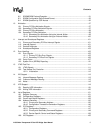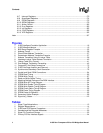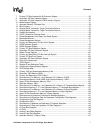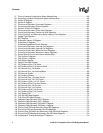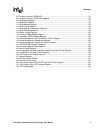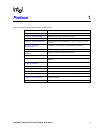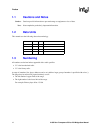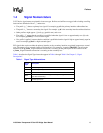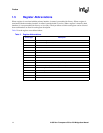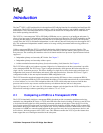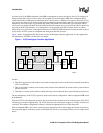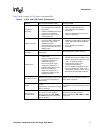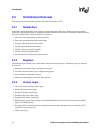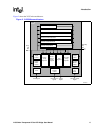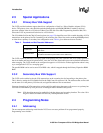
21555 Non-Transparent PCI-to-PCI Bridge User Manual 13
Preface
1.4 Signal Nomenclature
21555 device signal names are printed in lowercase type. Prefixes and suffixes are tagged with a leading or trailing
letter and are delimited with an “_” underscore:
• The prefix “p_” denotes a primary bus signal. For example: p_ad is the primary interface address/data bus.
• The prefix “s_” denotes a secondary bus signal. For example: s_ad is the secondary interface address/data bus.
• Other prefixes might appear. l_(load), pr_(parallel rom), and so on.
• The suffix “_l” means that the condition is qualified when that signal is low or approximately zero (0) volts.
For example: p_frame_l is a low-asserted signal.
• If no suffix is applied, it means that the condition is qualified when the signal is high or approximately equal to
vcc. For example: p_idsel is a high-asserted signal.
PCI signals that can be on either the primary interface or the secondary interface are printed in uppercase, normal
type. The names of low-asserted signals are followed by #. For example, “asserting FRAME#” can refer to the
assertion of the p_frame_l signal when the transaction is occurring on the primary bus or the assertion of the
s_frame_l signal when the transaction is occurring on the secondary bus.
Table 1 describes the Signal Type letters that appear in Table 6 through Table 10 in Chapter 3, “Signal
Descriptions”.
Table 1. Signal Type Abbreviations
Signal
Type
Description
I Standard input only.
O Standard output only.
TS Tristate bidirectional.
STS
Sustained tristate. Active low signal must be pulled high for one clock
cycle when deasserting.
OD Standard open drain.



